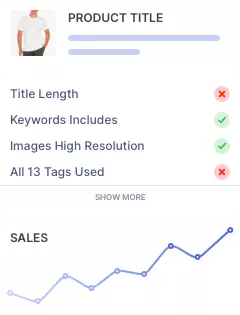Learn How To Sell Art Online
“I spent 500 hours on this artwork and have put my heart and soul into it. Don’t just scroll down; please like and comment – it would mean a lot to me.” You might have seen posts like these showcasing amazing sculptures or artworks on Instagram.

Trying to elicit an emotional reaction from you and gaining traction in the market, this social-media-powered mode of selling art online speaks of a larger trend. Artists have now taken to the digital domain to monetise their work.
The stats speak for themselves. Statista reports that the global art market is worth $67 billion, of which $11 billion is generated by selling artwork online. Over 12% of art dealers exclusively sell their artworks online. While the numbers are large, they are still small in the grander scheme of things. What’s stopping everyone from dabbling into the online world to establish themselves as artists and reach out to customers?
The answer is a lack of strategy and the mirage that only a surface level of online presence creates. You need to think deeper and do more to gain more traction when putting your artwork online. You must also understand all the benefits and challenges of selling art online before you start.
The Right Medium of Art – Physical or Digital
Before you step inside the digital realm to put your artwork on sale, decide what type of art you will be selling first.
Physical art is traditionally cherished and offers a tangible value through its sensory experience that digital art often doesn’t have. These are the artworks that you come across when you go on social media sites.
An artist slowly turns the artwork’s frame towards you, making you aware of the hard work they have put in. While you get a holistic view of the art, the minutia of details are behind pixels. You can’t smell the paint or put your hands over the surface on which the art has been made – that’s something you can only experience if you hold your hand in your hand. It is that experience that physical arts seek to sell.
With digital artworks, such as digital prints, animations or even crypto arts, your experience is not sensory but virtual. But while the art lacks physicality, it makes up for it in creativity. These artworks are easier to sell because people have only virtual expectations of them.
What among these artworks do you wish to sell online: a physical artwork that promises a sensory experience while being tangible or a digital artwork that stays inside the digital domain and within the reason of a person forever? These are the first challenges you will face when contemplating selling artwork online. But why care about it? What benefit does it have to sell your artwork through a digital domain if galleries are waiting for you to post your work?
Benefits of Selling Art Online
Why should you care about selling art online? What benefit is there in you pushing your artwork through a digital medium to a wider audience that might not even care what you have to say? Here are the reasons:
You are no longer Beholden to a Physical Gallery
There is value in physical galleries. Artworks placed inside a pristine frame in a well-air-conditioned hall make it appealing to customers. But here is the kicker – only a few galleries can do that. Smaller galleries find it hard to find a place among these brick-and-mortar behemoths.
It, however, has created an opportunity for them. Large galleries often take 50 to 60% commission from the selling price of the artwork. Small galleries take smaller commissions. And their commissions have even gotten smaller through online galleries. These small art galleries have become more appealing to artists by providing a virtual stage for selling artworks online. And because the art posting method has become so easy, artists can start a website by themselves and post their artwork – taking the reins of marketing and sales and cutting out the middleman. This approach has led to online art sales reaching $7.6 billion in 2020 and will continue to rise.
You Can Reach a Broader Audience
You now hold the power to make the most out of your artwork and gain recognition as an independent artist. Through online mediums, you can reach out to the maximum number through the digital medium. And you don’t need to create your website to do that.
There are art-focused marketplaces online that you can tap into. Etsy, for instance, is a place that hosts one-of-a-kind items for independent creators, giving you a springboard to grow your business quickly and rise above the rest.
But the benefits won’t stop there. Through integrations to such platforms as Roketfy, you will get access to different tools, such as listing checkers. Use them to list your artwork and grow it in the rankings on the platform.
You Get the Right Platform to Exhibit Your Artwork
Exposure to a wider audience isn’t enough – how you present your work also matters. Posting your work on a subpar website can damage your standing. That is why specific websites that give your artwork the perfect display ade have emerged.
These platforms often come with in-built facilities that you can use to enhance how your artwork is presented. For instance, suppose you have created an awesome sculpture and listed it on Etsy. How would you define it? How would you ensure that it gets higher in ranking to reach a position where it is visible to people?
You must take care of three things to make your artwork stand out and remain relatable to your audience. First, you need a good title; second, you require a product description; Third, you need something that lets you analyse competitors to address their shortcomings and make yourself stand out.
Such things can be managed on Etsy and similar platforms using tools that let you do everything from product research to writing a beautiful description.
With the right online platform, you can provide the same experiential treatment to your audience by elevating your artwork inside a digital frame.
How to Sell Your Art Online?
Now that you know the benefits of online art, here is a 4-step plan you can follow to sell your artwork online.
Register Your Business
You’re more likely to sell your art online if buyers don’t see you as a simple artist but as an artpreneur. The first step to becoming an artpreneur is creating a business entity. There are two ways you can go about it:
- Start a Sole Proprietorship – Sole Proprietorship is the perfect springboard for you as an independent artist. Your name will be synonymous with your business, giving you control of its assets and liabilities.
- Limited Liability Company – If you wish to sell artworks in bulk, create an LLC. It will require multiple partners but will separate you from the business entity, allowing you to remain free from its liabilities.
Create a Business Name that Pops
Every artist must have a moniker, which can’t always be your real name. The name should permeate your artistic identity, something that people can remember you from. It also has to be unique, so you don’t experience any wrong turns when marketing your business. Here are some tips to help you choose a name for your business.
- What distinguishes your art from the rest? Find it out and take a few characters from it.
- Learn about your prospective buyers who would be interested.
- Do keyword research around your artwork
These little nuances will add more weight to your brand name, which help your artwork grow once it is online.
Prepare to Post the Artwork Online
Putting your physical artwork online means digitisation, which comes with many aspects you need to take care of. You need to know the type of niche you must cater to and the right frame on which your art shines best. Here are the three things you must prepare for before posting your product online.
Find out the Niche You Will be Selling the Art to
Art is subjective, and the success of selling your artwork online is subjective to the type of customer you reach. So, before you place your artwork online, learn about the niche most likely to pick your product. Here are a few ideas.
- Have you sculpted something that one can place inside the main hall? If yes, such things have a wider appeal. Anyone can be a fan. However, such works are more appealing to the female demographic.
- For more mechanical artwork – like something related to action movies, kids and mail demographic would be the most optimal audience you can market to.
- If your artwork is about a specific theme, you can market your product to other artists.
Knowing the niche your artwork will appeal to will help you decide what you need to get started. And if you haven’t started creating your artwork yet – and want to specifically make one to sell on sites like Etsy, tap into product research tools to find what sells the most and attune your artwork accordingly.
Find out the online platform you wish your artwork to be on
Start researching about the platforms that suit your product best. While it is tempting to spread a wider reach and post your artwork on every site that allows you to do that – start small. Making precise decisions will help you cut down the budget you need to get started.
Our recommendation for most types of artwork would be Etsy. Simple, sleek, and deeply focused on helping independent artists, Etsy will give you the right canvas to get started.
Find out the products that are the most in-demand
If you want your artwork to be more than what lies inside a frame, put it on products that are most in demand. It does you two favours. One, it will add function to your art’s form. Secondly, the canvas of the product will add a certain oomph factor to your art that may leave your buyers mesmerised.
Go to the website on which you wish to post your artwork and learn about the most trending products. Here are some products that get the most traction.
- Men’s T-shirt
- Women’s T-shirt
- Kid’s Clothing
- Phone Cases
- Mugs
- Cards
- Bags
- Calendars
Choose a product that gives you the most surface to showcase your artwork. However, remember that while the product you choose should enhance your art, your art should also enhance that product – it is a two-way street. For instance, for mugs, you can have a wide-frame artwork where you tell a story only revealed when someone turns the cup – this is an enhancement. Putting an image of a “glass crash” on an iPhone cover would dampen the artwork’s quality.
Post Your Art and Start Tracking
Once you have put your artwork on the right canvas and have picked the right website, be ready to post the product. Here are the things you need to take care of here.
- Pick a good image for your product – An image with a white background is the perfect frame for any art you want to sell online. The more subtle you keep your surroundings, the more your art will shine.
- Pick a headline that goes beyond the name of your artwork – Suppose the name of your artwork is “Serene”; add a few keywords in the mix to help with the ranking. Do some keyword research for this purpose.
- Write a description from the heart – Take your prospective buyers through this write-up. Explain what it is, but also talk about what it signifies. It will help your prospects get the sensory experience they would otherwise not get.
If you want to sell your art online as a successful venture, keep track of everything. Check out Roketfy’s multiple utilities by keeping the listings in check while enhancing the quality of content and keywords to enhance your chances of getting to the top. Join today.




